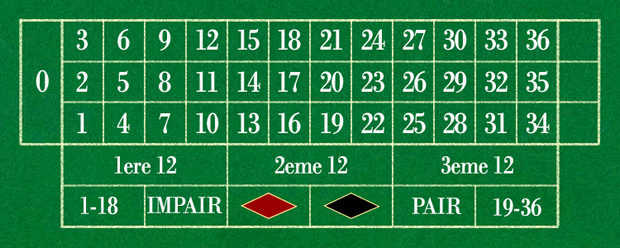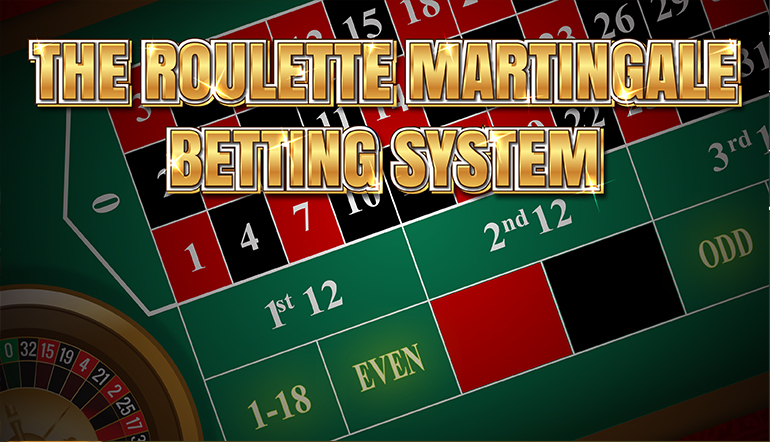Martingale Roulette
Posted By admin On 06/04/22The Martingale System was designed as a way to recoup losses and progressively build a bankroll. However, it is an incredibly risky strategy, as it requires you to place progressively larger bets each time you lose.
If you lose several bets in a row, you could wipe out a bankroll that would otherwise be more negligibly affected if you bet a fixed amount each time.
Martingale betting is most commonly used for double or nothing casino bets, such as standard blackjack, outside bets on roulette, or betting the pass line on Craps. This simplifies the method to. Common roulette strategies Martingale. Place a small bet on a color that provides 2x rewards. If the bet is lost, you double the previous bet on the same color. Continue the process until there is a win, this gives back all losses, and then you return to your original bet amount.
Each time you win, you place a standard bet amount. But if you lose, you double your next bet to cover the lost bet. And if you lose again, you double your bet again, and on and on until you win again. The only problem is that you can very easily go through an entire bankroll before another win occurs.
That’s why this system is incredibly dangerous and should not be used.
Gaming Today Martingale Calculator?
What Is The Martingale System?
Martingale betting is most commonly used for double or nothing casino bets, such as standard blackjack, outside bets on roulette, or betting the pass line on Craps. This simplifies the method to its most basic form.
For example, if you’re playing roulette, bet $10 on red, and lose, you’d be $20 on the next spin to recoup the lost bet. If you lose again, you’d double that again and bet $40. At this point, you’d lost $30, but if you win with a $40 double or nothing bet, it was like you won that first $10 bet.
You then return to $10 betting, and you repeat the method if you lose again.
The serious problem is that even at +100 (double or nothing) odds, there are going to be times that you go on 10 and 15 game runs and lose each one.
Let’s say you start with $10 and you continuously lose. With the Martingale System, this is how your bets (and losses) would break down, starting with the first bet:
- $10 ($0)
- $20 ($10)
- $40 ($30)
- $80 ($70)
- $160 ($150)
- $320 ($310)
- $640 ($630)
- $1280 ($1,270)
- $2,560 ($2,550)
- $5,120 ($5,110)
Within ten consecutive bets using the Martingale Strategy, you can be out $5,110 despite only starting at $10. And, if you do end up winning that 11th bet, you’re simply compensating for doing the Martingale Strategy to make back that initial bet.


Put another way, if you had $5,120 in your bankroll, started betting at $10, lost ten in a row, then won the 11th bet, you’d have $5,130 in your bankroll.
In the sports betting world, that means even a 60% bettor could go from a comfortable loss to missing rent in a matter of days.
What Is A Martingale Calculator?

With sports betting, it may seem more feasible to recoup your losses by placing smaller bets. The problem is that the longer the odds, the lower the likelihood of winning. It may be possible to place a $100 bet on +5120 odds and make $5,120 in one go, but the chances are extremely low, thus the higher potential payout.
However, sports betting very rarely offers double or nothing odds. The closest is usually the standard points spread odds of -110. That means if you place a $110 bet, you win $100.
The standard -110 sports bets are actually similar to betting on black or red on roulette because there are one or two green pockets on the roulette wheel. If the ball lands in a green pocket, all outside bets (including black or red) lose. That’s the casino’s house edge, and that extra 10 is the sportsbook’s version of that. (It’s just called the “vig” rather than the house edge.)

For long-term use of the Martingale System, your best bet (other than using an entirely different strategy) is to focus on those -110 payouts. This will ensure that you’re getting the same payout potential each time you place a bet.
Looking for other calculators to use when sports betting? Check out:
How To Use A Martingale Calculator To Place A Sports Bet
If you do decide to use the Martingale System, this calculator will help you determine the size of your next wager based on the odds of the bet and the amount in losses that you’re trying to recoup.
Martingale Roulette Flaw
The calculator is most helpful when you’re dealing with inconsistent odds. For example, if you bet $100 on a -110 bet, you could technically make up those losses with a $10 bet on odds of +1000 or longer.
But even still, the imperfect -110 means that the math can get a bit complicated unless you’re starting with $11 (or $110, but that could mean losing over $50,000 in just a ten-game losing streak).
To use the Martingale Calculator, simply enter the amount of your most recent bet, the total losses you are facing, and the American odds on your upcoming bet. It will return the expected stake for the next bet.

Why The Martingale System Is Risky
Martingale Bet
The Martingale Calculator will both help you calculate your stake (bet amount) when using the Martingale system, and also, hopefully, convince you to NOT USE THE MARTINGALE SYSTEM. There are a number of ways to debunk the viability of the system, but the most important one is that it only works if you have an unlimited bank account.
The Martingale System was designed in a way to progressively build a bankroll…if you are winning. Each time you win you place a standard bet, like the units size discussed in bankroll management, but each time you lose you up your bet amount to cover your previous losses to get you back to your previous high.
The Martingale calculator helps you calculate what your next bet should be after a loss. The serious problem is that even at+100 odds there are going to be times that you go on 10 and 15 game runs and each time you lose. That easy math on that is that if you lose $10, you should bet $20 to return to your previous balances. If you lose that bet, you are now down $30. The bet after that, you are our $60, $120, $240, $480, $960, $1920, $3840. In just 10 bets, even a 60% bettor could go from a comfortable loss to missing rent.